Policy Briefs

Blackouts, shortages, and unreliable access to electricity are a challenge for Malawi’s businesses. Malawian firms experience approximately 7.4 outages per month, with each outage lasting 3.6 hours. An independent evaluation of ESCOM revealed its showed an insufficient (and in some areas, deficient) corporate governance and management practices as principal causes of its weakened financial position and frequent power outages. We recommend that the ESCOM board consider providing a 10-year long-term technical assistance program to improve corporate governance and management practices at ESCOM. This is expected to address some, but not all, the challenges of electricity provision, effectively preventing 5% of Malawi’s generated electricity from being lost before it reaches the consumer.
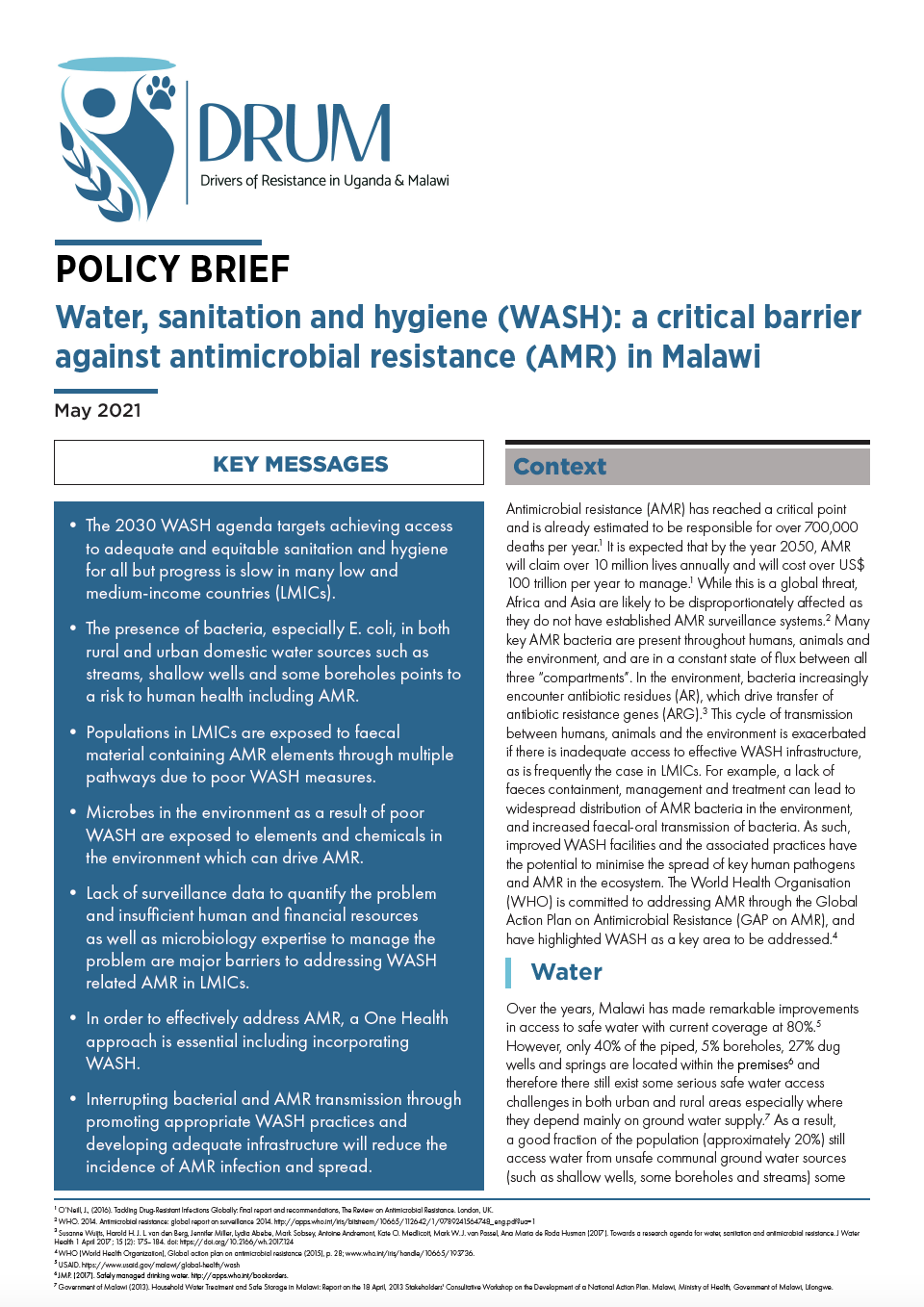
Many key AMR bacteria are present throughout humans, animals and the environment, and are in a constant state of flux between all three “compartments”. This cycle of transmission between humans, animals and the environment is exacerbated if there is inadequate access to effective WASH infrastructure, as is frequently the case in LMICs. In order to effectively address AMR, a One Health approach is essential including incorporating WASH. Interrupting bacterial and AMR transmission through promoting appropriate WASH practices and developing adequate infrastructure will reduce the incidence of AMR infection and spread.

Food Insecurity remains a significant concern, with 63% of Malawian households deemed severely food insecure. Focusing on sustainable farming models, this cost-benefit analysis identifies two interventions which demonstrate significant promise in improving food security: Purdue Improved Crop Storage (PICS) Bags Promotion; and Specific Crop Diversification Strategies.

Agriculture is the backbone of Malawi’s economy; it accounts for almost 80 per cent of employment, and 80 per cent of the country’s total exports (World Bank, 2020). However, Malawi remains highly reliant on tobacco and has been slow to diversify into other crops. Two barriers preventing the export of regionally demanded crops are the long-standing export ban on maize and poor quality-control standards and regulations for groundnuts.
The following policy solutions for maize and groundnuts demonstrate the greatest potential for export growth and alignment with national priorities.
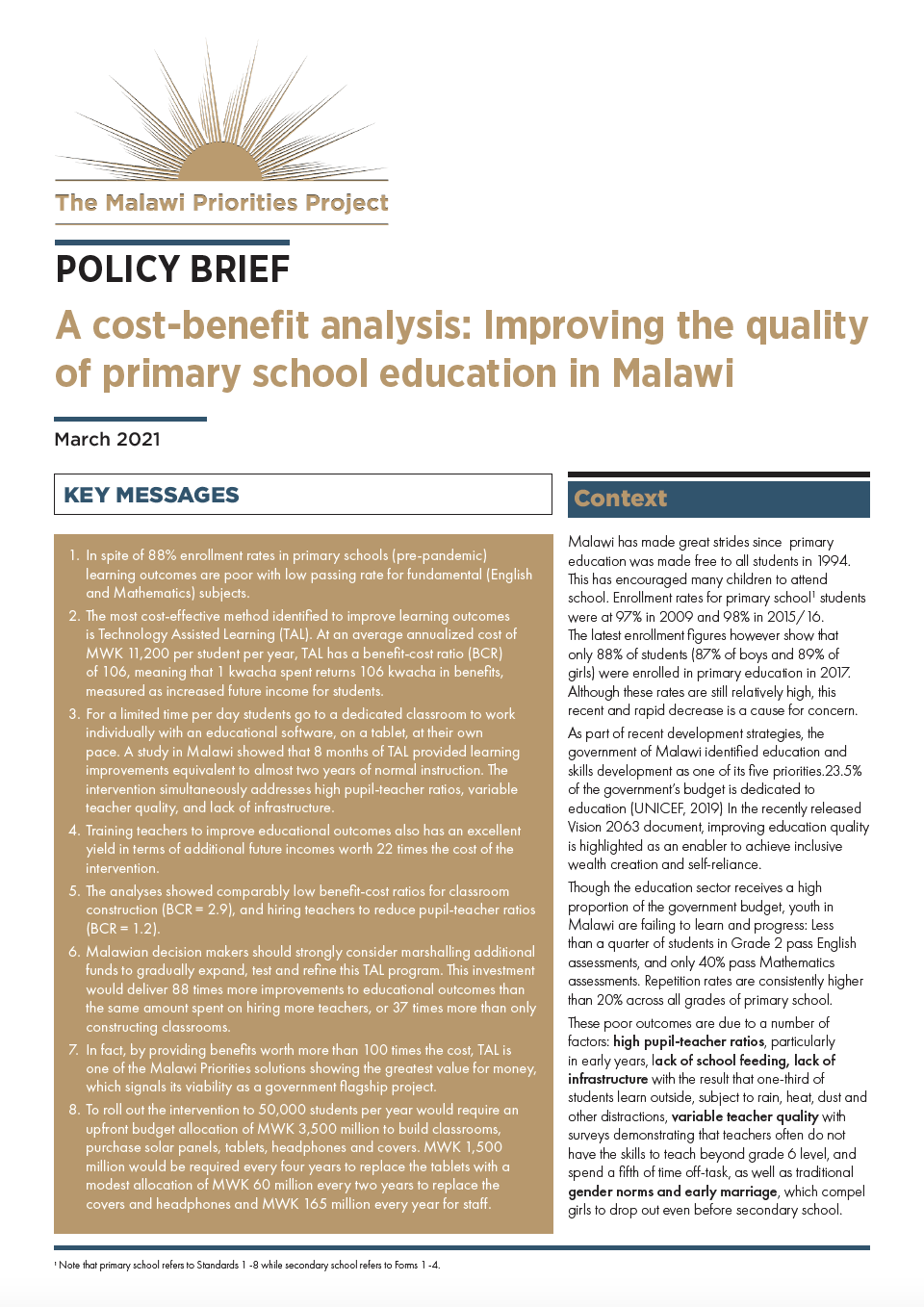
Malawi has made great strides since primary education was made free to all students in 1994. This has encouraged many children to attend school. In spite of 88% enrollment rates in primary schools (pre-pandemic) learning outcomes are poor with low passing rate for fundamental (English and Mathematics) subjects. The most cost-effective method identified to improve learning outcomes is Technology Assisted Learning (TAL).
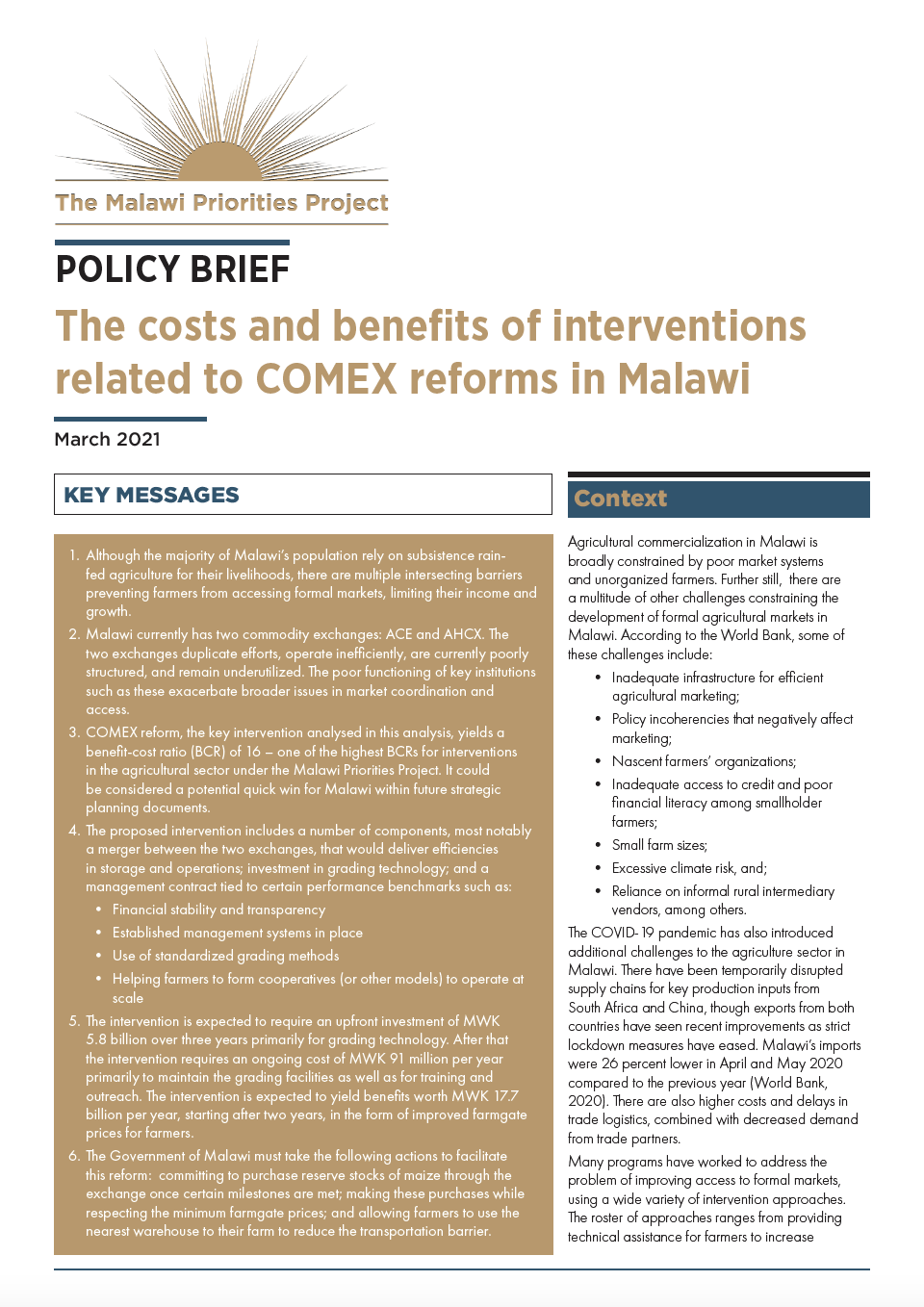
Agricultural commercialization in Malawi is broadly constrained by poor market systems and unorganized farmers. Further still, there are a multitude of other challenges constraining the development of formal agricultural markets in Malawi. The COVID-19 pandemic has also introduced additional challenges to the agriculture sector in Malawi.
The proposed intervention for this analysis is the reform of the two commodity exchanges. This was selected because it has the potential to improve policy and market coordination at a national level, as well as provide a practical avenue for farmer training, storage, and credit systems.
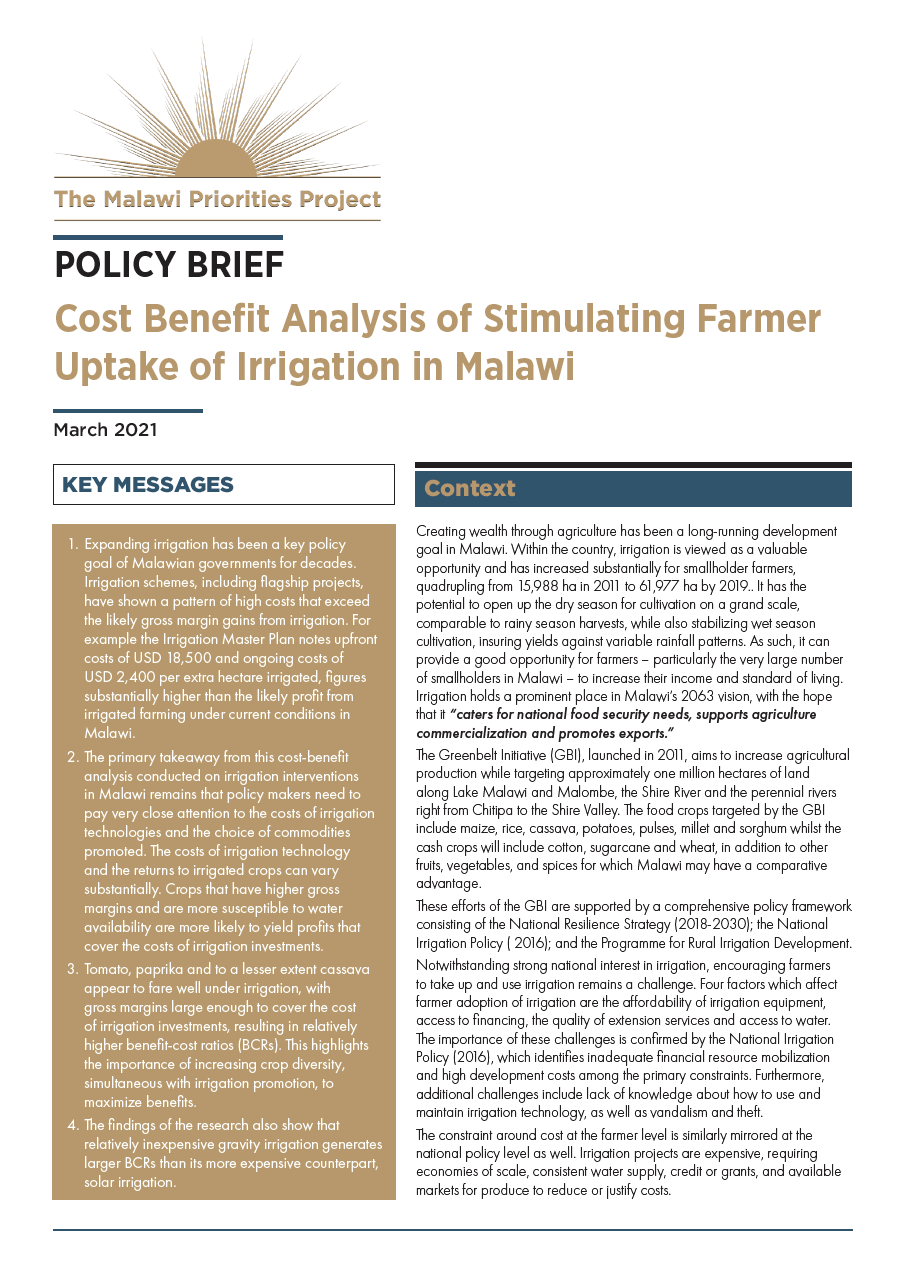
Creating wealth through agriculture has been a long-running development goal in Malawi. Within the country, irrigation is viewed as a valuable opportunity and has increased substantially for smallholder farmers, quadrupling from 15,988 ha in 2011 to 61,977 ha by 2019.. It has the potential to open up the dry season for cultivation on a grand scale, comparable to rainy season harvests, while also stabilizing wet season cultivation, insuring yields against variable rainfall patterns. The main takeaway from this cost-benefit analysis is that policymakers need to pay very close attention to costs of irrigation technologies and the choice of commodities promoted. Tomato, paprika and to a lesser extent cassava appear to fare well under irrigation, with gross margins large enough to cover the cost of irrigation investments studied in this report.

The population of Malawi is expected to double from 2020 to 2050. Reducing population growth is imperative for Malawi to unlock the benefits of a demographic benefit. Access to and use of contraception in Malawi has increased substantially over the past two decades. In this report, we have assessed the costs and benefits of providing women with postpartum counselling services and free access to contraceptives and transportation.
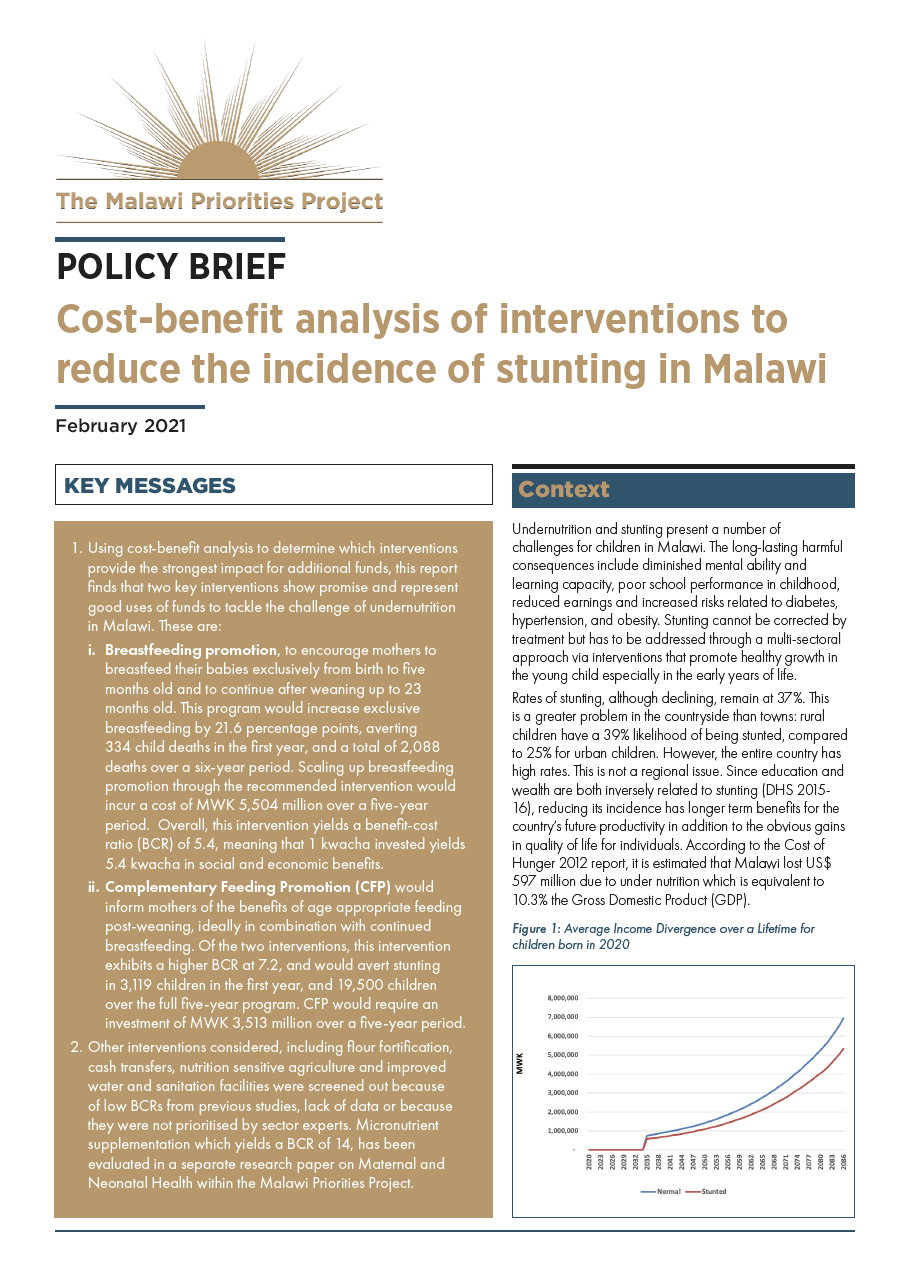
Using cost-benefit analysis to determine which interventions provide the strongest impact for additional funds, this report finds that two key interventions show promise and represent good uses of funds to tackle the challenge of undernutrition in Malawi. These are; Breastfeeding promotion and Complementary Feeding Promotion (CFP).

Malawi has made significant progress in the fight against HIV and AIDS. 90% of those living with HIV know their status and have been initiated on ART and 95% of pregnant women are screened for infection. Despite these notable successes, stemming new infections remains a concern in the country, with an estimated 32,300 annual new infections in 2019 alone according to the Global Burden of Disease. Providing HIV and AIDS services to FSWs is one important lever to reducing the spread of the disease.

While notable progress has been made in Malawi’s efforts to meet the Millennium Development Goals surrounding child health and child survival, progress in curbing neonatal and maternal mortality and morbidity has been less substantial. The rate of progress has been less than half of that for overall child mortality, with neonatal deaths at 22 per thousand live births in 2018. Neonatal disorders come second only to HIV/AIDS in terms of years lost due to ill-health, disability or early death.
Cost-Benefit Analysis run against the most promising singular and sets of interventions within Malawi’s environment revealed two interventions with significant promise.

This issue brief has been prepared by the African Institute for Development Policy (AFIDEP) based on the study, “Sustained reduction in third-generation cephalosporin usage in adult inpatients following introduction of an antimicrobial stewardship program in a large urban hospital in Malawi (https://pubmed.ncbi.nlm.nih.gov/32060523/). The work was led by Rebecca Lester and supported by the Drivers of Resistance in Uganda and Malawi (DRUM) Consortium. The study sought to demonstrate the feasibility, acceptability and cost-saving of a stewardship program where resources are limited. With funding from the UK Global Challenges Research Fund, the Liverpool School of Tropical Medicine (LSTM) in 2017 established the DRUM Consortium with the purpose of reducing antimicrobial resistance (AMR) spread in Uganda and Malawi. This issue brief seeks to promote and support the continued investment in antimicrobial resistance solutions.

